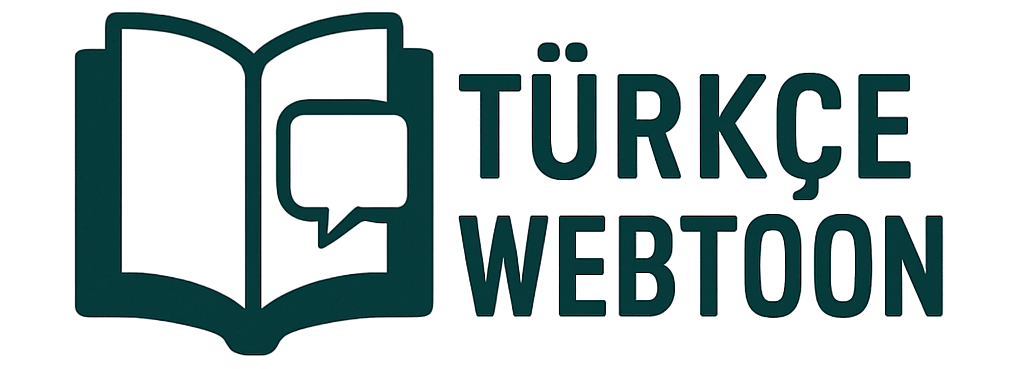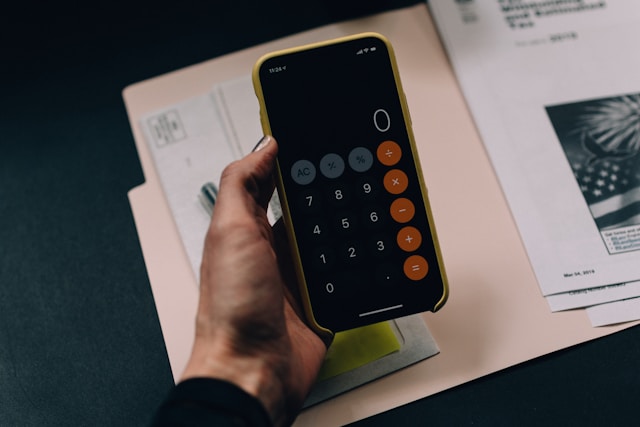Ever feel like your money vanishes faster than a celebrity’s privacy? One minute your paycheck hits the bank, the next you’re wondering where it all went, with nothing but a few lingering receipts to show for it. If you’ve tried budgeting before and given up, feeling like it’s a restrictive diet for your wallet, you’re absolutely not alone. Many of us associate budgeting with deprivation, endless spreadsheets, and constantly saying “no” to fun. It feels like a chore, a punishment for past financial missteps, rather than a powerful tool for freedom and growth.
But what if I told you that in 2025, creating a budget could be less about restriction and more about intention? Less about feeling guilty and more about feeling in control? Less about complex math and more about simple clarity? This isn’t your grandma’s dusty old ledger book. Modern budgeting is about understanding where your money truly goes, aligning your spending with your values, and building a financial roadmap that genuinely works for your unique life. Whether you’re struggling to save, drowning in debt, or just want to feel more financially secure, this article is your friendly, no-judgment zone guide. We’ll explore why traditional budgets often fail, discover methods that actually stick, and give you the step-by-step blueprint to create a budget that empowers you to reach your goals. Ready to turn those financial question marks into confident exclamation points? Let’s get started!

What Is a Budget, Really? (Hint: It’s Not a Straightjacket)
Before we dive into the “how,” let’s debunk some common myths about budgeting. A budget isn’t a financial straitjacket designed to squeeze all the joy out of your life. It’s quite the opposite!
Beyond Just Tracking: Your Financial GPS
At its core, a budget is simply a plan for your money. It’s about consciously deciding where your hard-earned cash goes instead of letting it slip through your fingers unnoticed. Think of it as a GPS for your finances:
- It tells you where you are right now (your income and expenses).
- It helps you determine where you want to go (your financial goals – saving for a house, paying off debt, taking that dream vacation).
- It provides the route to get there, guiding your spending decisions.
It’s a proactive tool that gives you control and clarity, replacing anxiety with confidence. The goal isn’t to spend less on everything, but to spend intentionally on the things that truly matter to you, while redirecting funds from areas that don’t.
Why Budgeting Matters More Than Ever in 2025
The financial landscape in 2025, with evolving economic pressures and technological advancements, makes intelligent money management crucial.
- Rising Costs: Inflation can erode purchasing power. A budget helps you adapt and identify areas to trim without feeling deprived.
- Financial Goals: Whether it’s saving for a down payment, investing, or planning for retirement, clear financial goals require a clear path. A budget is that path.
- Debt Management: Understanding your cash flow is the first step to tackling consumer debt effectively and strategically.
- Peace of Mind: Knowing where your money is, and where it’s going, reduces financial stress and anxiety, freeing up mental space for other joys in life.
The Mindset Shift: Why Budgets Fail (And How Yours Won’t)
If your past budgeting attempts have ended in frustration, it’s probably not you; it’s how you approached it. Most budgets fail due to common psychological traps and rigid thinking. Let’s make sure yours is different!
The “All or Nothing” Trap: The Budgeting Diet Mentality
One of the biggest reasons budgets fail is the “financial diet” mentality. We decide to cut everything enjoyable – coffee, dining out, entertainment – in a drastic effort to save. What happens? Just like a restrictive diet, we quickly feel deprived, rebel, and binge-spend, throwing the whole budget out the window.
Your solution: Be realistic and build in “fun money.” Your budget should reflect your real life, not an idealized, miserable version of it. Allocate funds for discretionary spending, guilt-free. It’s about balance, not banishment. A budget that’s too tight will break.
Ignoring Your “Why”: Lack of Motivation
Trying to stick to a budget without a clear purpose is like trying to drive without a destination. You’ll wander aimlessly and eventually give up.
Your solution: Identify your financial “why.” What are you budgeting for?
- Paying off that annoying credit card debt?
- Saving for a down payment on your dream home?
- Building an emergency fund for peace of mind?
- Planning a once-in-a-lifetime trip?
- Starting your own business?
When you connect your budget to a compelling goal, it transforms from a chore into a powerful vehicle for achieving your dreams. Write down your “why” and keep it visible!
Perfectionism and Guilt: The Slip-Up Spiral
So, you went over budget on groceries this month. Or maybe you had an unexpected expense. The perfectionist in us screams, “You failed! Might as well give up!” This guilt often leads to a full abandonment of the budget.
Your solution: Embrace flexibility and forgive yourself. Your budget is a living document, not a rigid contract carved in stone. Life happens! Unexpected expenses pop up, and sometimes you just need to treat yourself. If you go off track, simply acknowledge it, adjust, and get back on course next month (or even tomorrow!). The goal is progress, not perfection.
Overcomplicating It: Drowning in Details
Trying to track every single penny, creating dozens of obscure categories, and using complex software can quickly become overwhelming and unsustainable.
Your solution: Keep it simple, especially when you’re starting. Focus on the big categories first. As you gain confidence, you can refine and add more detail if needed. The best budget is the one you’ll actually stick to.

Choosing Your Budgeting Method: Find Your Perfect Fit
There’s no one-size-fits-all budget. What works for your best friend might not work for you, and that’s okay! The key is finding a method that resonates with your personality and financial habits.
1. The 50/30/20 Rule: Simple & Popular
This is one of the most straightforward and widely recommended budgeting methods, popularized by Senator Elizabeth Warren. It’s a great starting point for many people.
- 50% Needs: Essential expenses like housing (rent/mortgage), utilities, groceries, transportation, insurance, and minimum debt payments.
- 30% Wants: Discretionary spending that enhances your lifestyle but isn’t strictly necessary. This includes dining out, entertainment, hobbies, new clothes, vacations, and subscription services.
- 20% Savings & Debt Repayment: Funds dedicated to building an emergency fund, retirement savings, investing, and aggressively paying down debt beyond the minimums.
Pros: Easy to understand and implement, flexible, allows for wants. Cons: Can be challenging if your “needs” consume more than 50% of your income.
Scenario: Alex earns $4,000 net income per month.
- Needs: $2,000 (rent, groceries, utilities, transport)
- Wants: $1,200 (dining out, entertainment, subscriptions)
- Savings/Debt: $800 (emergency fund, extra student loan payments)
2. Zero-Based Budgeting: Giving Every Dollar a Job
With this method, every single dollar of your income is assigned a specific “job” (category) until your income minus your expenses (including savings and debt payments) equals zero. This ensures no money is left unaccounted for.
Pros: Provides maximum control and awareness of where every dollar goes, forces intentional spending, great for accelerating debt repayment or savings. Cons: Requires more detailed tracking and attention, can feel restrictive if not properly managed.
Scenario: Maria earns $3,500 net income. She allocates:
- Rent: $1,200
- Groceries: $400
- Utilities: $200
- Transportation: $150
- Debt Payment (extra): $300
- Savings: $500
- Dining Out: $250
- Entertainment: $150
- Misc: $350
- Total: $3,500 (Income – Expenses = $0)
3. The Envelope System: Cash-Based Control
This tactile method involves allocating cash into physical envelopes for different spending categories (e.g., “Groceries,” “Entertainment,” “Dining Out”). Once the cash in an envelope is gone, you can’t spend more in that category until the next pay period.
Pros: Excellent for visual spenders, helps curb overspending, very effective for variable expenses. Cons: Not practical for all expenses (e.g., online bills), requires managing physical cash.
4. Paycheck-to-Paycheck Budgeting (for Irregular Income)
If your income varies (e.g., freelance, commission-based), traditional monthly budgets can be tricky. This method focuses on budgeting only the money you currently have until your next paycheck arrives. It emphasizes covering immediate needs and building a buffer over time.
Pros: Flexible for fluctuating incomes, reduces stress by focusing on immediate financial reality. Cons: Requires careful monitoring, building a buffer can take time.
Step-by-Step Guide to Building Your 2025 Budget
Ready to roll up your sleeves? Here’s how to create a budget that you can actually stick to in 2025.
Step 1: Calculate Your Monthly Income (Net!)
This is your starting point. Gather all your income sources: salary (after taxes and deductions), freelance earnings, side hustles, benefits, etc. Crucially, use your net income (what actually hits your bank account), not your gross income.
Step 2: Track Your Spending (Seriously, Don’t Skip This!)
This is the most critical and often eye-opening step. For at least 30 days (preferably 60-90), track every single dollar you spend.
- Why? Most people severely underestimate where their money goes. That daily coffee, those impulse buys, the forgotten subscriptions – they add up!
- How to Track:
- Apps: Budgeting apps (more on those later!) link to your accounts and auto-categorize.
- Spreadsheet: A simple Google Sheet or Excel file can work wonders.
- Pen & Paper: Old school, but effective. Keep a small notebook.
- Bank/Credit Card Statements: Review them meticulously at the end of the month.
Don’t judge your spending during this phase, just observe. This is purely data collection. You’re simply gathering information so you can make informed decisions later.
Step 3: Categorize Your Expenses (Needs vs. Wants)
Once you have your spending data, organize it into categories. A simple starting point is:
Fixed Expenses (consistent amount each month):
- Rent/Mortgage
- Loan Payments (car, student, personal)
- Insurance Premiums
- Subscription Services (Netflix, gym, software)
- Minimum Debt Payments
Variable Expenses (fluctuate each month):
- Groceries
- Utilities (electricity, water, gas – often vary seasonally)
- Transportation (gas, public transport)
- Dining Out/Takeaway
- Entertainment/Hobbies
- Personal Care
- Shopping (clothes, electronics)
- Miscellaneous
Remember to differentiate between “Needs” (essential for living) and “Wants” (discretionary spending). This distinction is crucial for identifying areas where you can cut back without feeling deprived.
Step 4: Choose Your Budgeting Method & Allocate Funds
Now that you know your income and where your money has been going, pick one of the methods we discussed (50/30/20, Zero-Based, Envelope, etc.) and start assigning limits to your categories.
- The Golden Rule: Your total allocated expenses + savings + debt repayment should not exceed your income. If it does, you’re spending more than you earn, and you need to adjust.
- Be Realistic: Don’t set impossible limits. If you typically spend $500 on groceries, don’t suddenly budget $200. Make gradual, sustainable changes.
- Prioritize Savings: Treat savings like a non-negotiable bill. Pay yourself first! Even small amounts add up over time.
Step 5: Review and Adjust (Your Budget is Alive!)
This is arguably the most important step for long-term success. Your budget is not a static document. Your income, expenses, and goals will change, and your budget needs to change with them.
- Monthly Check-ins: At the end of each month, review your spending against your budget.
- Did you stay within your limits?
- Where did you overspend? Why?
- Were there unexpected expenses?
- Do any categories need to be adjusted (up or down)?
- Adaptation is Key: If you consistently overspend in one category (e.g., dining out), either acknowledge that’s a priority for you and reduce another “want” category, or find ways to cut back in that area. If you find you’re underspending, great! Redirect that money towards savings or debt.
Mini Case Study: David, a recent graduate, created his first budget in 2025 using the 50/30/20 rule. After the first month, he realized his “wants” were closer to 40% than 30%. Instead of giving up, he adjusted. He identified one subscription he rarely used and cut back on one less-enjoyable takeaway meal per week. This freed up enough money to get him closer to his 30% goal, proving that flexibility is key to adherence.
Making Your Budget Stick: Tips for Long-Term Success
Creating the budget is just the beginning. The real magic happens when you stick to it.
Automate Your Savings and Bill Payments
This is a game-changer. Set up automatic transfers from your checking account to your savings account(s) (emergency fund, retirement, specific goals) on payday. Also, automate as many bill payments as possible. This removes the temptation to spend the money and ensures your financial goals are prioritized. “Out of sight, out of mind” works wonders here!
Create a “Buffer” or “Miscellaneous” Category
Life throws curveballs. Don’t let unexpected expenses derail your budget. Create a small “buffer” or “miscellaneous” category each month for those unforeseen costs (a parking ticket, a forgotten birthday gift, a minor home repair). This prevents budget blowouts and keeps you feeling in control.
Cash Is King (For Certain Categories)
If you struggle with overspending in specific “want” categories (like dining out or entertainment), try using the envelope system for just those areas. Withdrawing cash for those categories can make you more conscious of your spending, as physical money feels more “real” than swiping a card.
Schedule Regular Money Dates With Yourself (Or a Partner)
Make reviewing your budget a regular, even enjoyable, ritual. Set aside 30 minutes each week or fortnight. Grab a cup of coffee, put on some music, and calmly review your spending. If you have a partner, do it together to ensure you’re both on the same page. This regular check-in helps you catch problems early and make adjustments before they become major issues.
Find Budget-Friendly Alternatives
- Meal Planning: Plan your meals for the week, create a grocery list, and stick to it. This reduces food waste and impulse buys.
- Free Entertainment: Explore free local events, parks, libraries, or virtual experiences.
- DIY: Can you do a small repair yourself instead of hiring someone? Can you make your own coffee instead of buying it?
- Borrow/Rent/Secondhand: Before buying new, consider borrowing from a friend, renting, or buying quality used items.
Leveraging Technology in 2025 for Your Budget
The digital age has made budgeting easier and more accessible than ever before. Forget the paper ledger if that’s not your style!
Top Budgeting Apps (Examples, not endorsements):
- Mint: A popular free option that links to your bank accounts, tracks spending, categorizes transactions, and helps you set goals.
- YNAB (You Need A Budget): A paid app based on the zero-based budgeting philosophy. It’s renowned for teaching users to be intentional with every dollar.
- Rocket Money (formerly Truebill): Focuses on tracking subscriptions, negotiating bills, and identifying spending patterns.
- Simplifi by Quicken: A robust tool for budgeting, tracking investments, and managing net worth.
These apps automate much of the tedious data entry, provide visual reports, and can even send you alerts if you’re close to exceeding a budget category. According to a 2025 financial technology report (placeholder for a real statistic if available), over 60% of individuals who successfully maintain a budget utilize digital tools to track their spending and plan their finances.
Spreadsheets (Google Sheets/Excel): Flexible and Free
If you prefer a hands-on approach or want complete customization, a simple spreadsheet is incredibly powerful. You can create your own categories, track everything manually, and build personalized charts and graphs. Many free templates are available online to get you started.
AI-Powered Insights: The Future of Budgeting
Keep an eye out for emerging AI-powered financial tools in 2025. These can analyze your spending patterns, predict future expenses, suggest areas for saving, and even offer personalized financial advice based on your habits. While not fully mainstream yet, AI will increasingly play a role in making budgeting more insightful and less labor-intensive.
Conclusion: Your Money, Your Power, Your Future
Creating a budget that actually works in 2025 isn’t about rigid rules or deprivation; it’s about empowerment. It’s about taking the reins of your financial life, understanding where your money goes, and intentionally directing it towards the life you truly want to build. From understanding the emotional triggers of overspending to choosing the budgeting method that fits you, and from tracking every penny to automating your savings, every step you take is a step towards greater financial freedom and peace of mind.
Remember, this is a journey, not a destination. There will be months where you nail it, and months where you stumble. The key is to be flexible, to learn from your experiences, and to keep showing up for yourself and your financial goals. Your budget is your personal financial roadmap, designed by you, for you.
So, what are you waiting for? Take that first step today. Calculate your income, start tracking your spending, and choose a method that feels right. Your future self will thank you. Now it’s your turn to make your money work for you!
Frequently Asked Questions (FAQ)
Q: How long does it take for a budget to start working?
A: You’ll start seeing clarity and control almost immediately once you begin tracking. However, it typically takes 2-3 months of consistent tracking and adjusting to truly understand your spending patterns and for the budget to feel natural and effective. Don’t give up after the first month!
Q: What if my income is irregular? Can I still budget?
A: Absolutely! Budgeting with irregular income requires a slightly different approach. The “Paycheck-to-Paycheck” method is excellent, focusing on allocating the money you currently have. Building a buffer (saving 1-3 months of expenses) is also crucial to smooth out income fluctuations.
Q: Should I include debt payments in my budget?
A: Yes, absolutely! Minimum debt payments (like credit card minimums, car loans, student loans) are “needs” and should be included. Any extra payments you make towards accelerating debt repayment should be allocated under your “savings and debt repayment” category, treated as a priority.
Q: What’s the biggest mistake people make when budgeting?
A: The biggest mistake is being too restrictive initially, which leads to feeling deprived and giving up. Start realistically, build in some “fun money,” and be prepared to adjust your budget as you learn more about your spending habits. Flexibility is key to long-term adherence.
Q: How often should I review my budget?
A: Ideally, a quick check-in weekly (10-15 minutes) to see where you stand, and a more thorough review at the end of each month (30-60 minutes) to reconcile, adjust categories, and plan for the next month. Consistency is more important than frequency.

